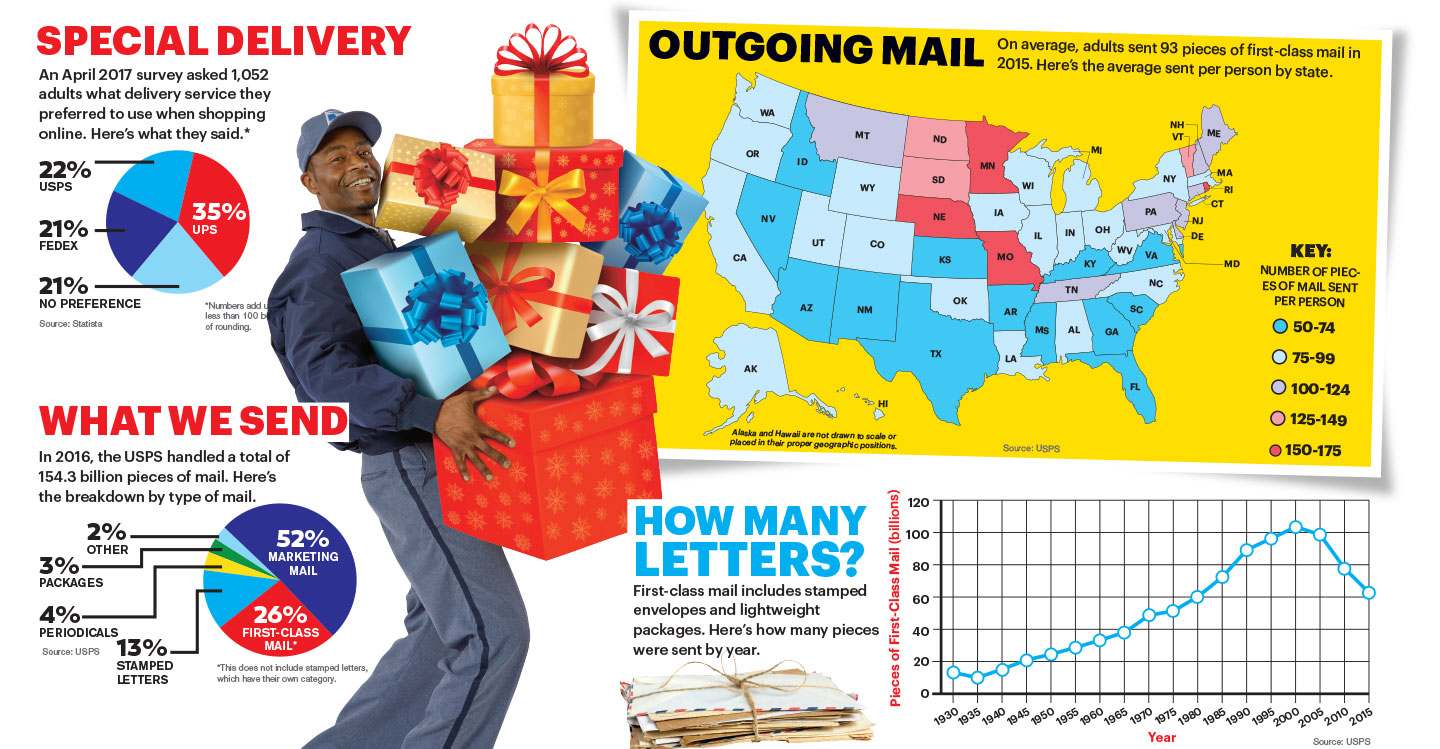Postal companies take center stage during the holiday season. Workers at UPS, FedEx, and the United States Postal Service (USPS) are hard at work moving holiday cards, presents, and all-important letters to Santa around the country—and the world.
The USPS is based on a system that dates back to the 18th century. Benjamin Franklin came up with a relay system using wagons and horses to deliver mail between colonies. He was eventually able to cut delivery times down from months to only a few weeks.


